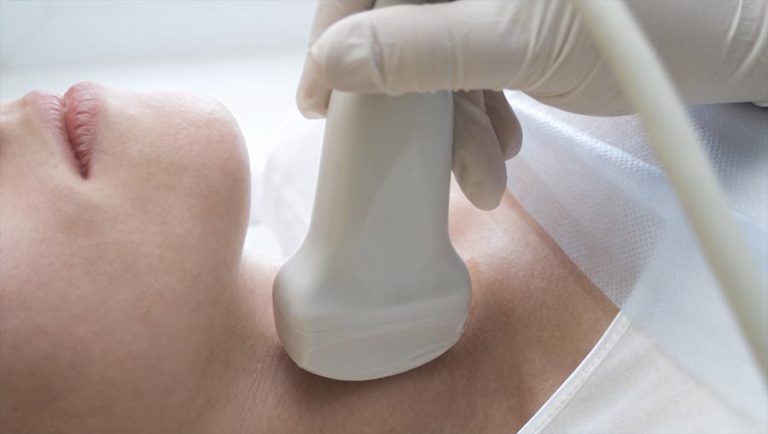Ultrasound technology, a cornerstone of modern medical diagnostics, has evolved significantly since its inception. The foundational principles for ultrasound, based on the Doppler effect and piezoelectric phenomenon, were established in the 19th century, paving the way for diagnostic Doppler ultrasound technology in the 20th century (Maulik, 2005). From its early military applications to becoming an indispensable tool in radiology, cardiology, and image-guided surgery, ultrasound’s journey is marked by significant technological advancements and expanding applications (Newman & Rozycki, 1998).
Ultrasound uses high-frequency sound waves to create images of internal body structures. When these sound waves are directed into the body, they reflect off tissues, organs, and other structures at different rates, and these echoes are captured and translated into visual images. This non-invasive and real-time imaging capability has revolutionized various aspects of healthcare.
One of the most notable advancements in ultrasound technology is in the field of obstetrics. Since the late 1960s, it has been a routine method for estimating fetal growth and maturity, aiding in the safe monitoring of pregnancies (Oakley, 1986). Moreover, the evolution from simple A-scans to modern three-dimensional imaging has immensely enhanced diagnostic capabilities and facilitated precision in invasive procedures (McNay & Fleming, 1999).
Today, ultrasound is an integral part of medical diagnostics, known for its safety, versatility, and real-time imaging capabilities, making it a first-line imaging tool in numerous medical scenarios.
Ultrasound in Various Medical Fields
Ultrasound technology, a cornerstone in modern medical diagnostics, offers diverse applications across various medical specialties. Its versatility is highlighted through its significant contributions to several fields:
- Radiotherapy: In the realm of cancer treatment, ultrasound plays a pivotal role. A study by Badcock (1977) highlighted its effectiveness in radiotherapy. It provides accurate visualizations of tumors, organs, and body outlines, which is crucial for adapting and fine-tuning treatment strategies. This precise imaging capability ensures targeted and effective therapy for cancer patients (Badcock, 1977).
- Renal Transplant Evaluation: Ultrasound’s role extends to post-operative care in renal transplants. According to Bartrum et al. (1976), ultrasound is invaluable in detecting complications like lymphocele, abscess, hydronephrosis, and hematoma. Moreover, it can identify acute changes in renal volume, which are indicative of rejection. This non-invasive tool significantly aids in the timely management of transplant-related complications (Bartrum et al., 1976).
- Gastroenterology: Ultrasound’s utility in gastroenterology is equally impressive. Doust (1976) pointed out its effectiveness in diagnosing conditions like pancreatic diseases, gallstones, liver tumors, hepatic metastases, and ascites. Additionally, it aids in guiding needle placement for pancreatic and liver biopsies, making it a vital tool for both diagnosis and treatment (Doust, 1976).
- Dermatology: In dermatology, ultrasound has carved out a niche. A study by Schmid-Wendtner and Burgdorf (2005) demonstrated its application in measuring skin and tumor thickness, and in the detection of lymph nodes and subcutaneous tumors. This provides dermatologists with critical diagnostic information, aiding in the management of various skin conditions and cancers (Schmid-Wendtner & Burgdorf, 2005).
- Anaesthesia and Critical Care: In the fields of anesthesia and critical care, ultrasound has become an indispensable tool. Ng and Swanevelder (2011) noted its application in assessing hemodynamic instability and cardiac function. The ability to non-invasively monitor these vital parameters is essential in critical care settings, where rapid and accurate assessments can be lifesaving (Ng & Swanevelder, 2011).
These varied applications underscore ultrasound’s flexibility and its importance in the diagnostic arsenal of modern medicine. Each field benefits from its non-invasive nature, providing a window into the body’s internal workings without the need for surgical intervention.
Horizon Scanning in Medical Diagnosis:
Ultrasound technology, long established in the medical field, is on the brink of revolutionary changes that promise to enhance its role in medical diagnosis. A study by Hendee (1983) highlights the potential of ultrasound in oncologic diagnosis, pointing towards its substantial future contributions to medical imaging (Hendee, 1983). This sets the stage for an era where ultrasound could become central to cancer detection and treatment planning.
Innovations are also underway to develop non-ionizing cellular imaging techniques based on ultrasound, as noted by Casciaro (2011). This advancement is particularly significant as it opens the door to more optimal diagnoses and therapies, especially in sensitive cases where radiation exposure is a concern (Casciaro, 2011).
Another ground-breaking development is in ultrasound-triggered image-guided drug delivery, as explored by Böhmer et al. (2009). This technology holds promise for localized treatment in fields like cardiology and oncology, ranging from small drug molecules to complex biologics and nucleic acids (Böhmer et al., 2009). It represents a significant leap forward in targeted therapy, offering the potential to deliver treatments directly to affected areas while minimizing systemic side effects.
The versatility of ultrasound is further evidenced in its application to veterinary medicine, where it shows great promise in diagnosing intra-peri abdominal diseases in animals (Mathai et al., 2008). This expansion into veterinary medicine underscores ultrasound’s adaptability and wide-ranging diagnostic capabilities.
Furthermore, advancements in 3D and 4D ultrasound technologies are set to solidify ultrasound’s position relative to MRI in body imaging. These technologies offer a more standardized and reliable approach to diagnosis, particularly in complex anatomical regions (Benacerraf, 2004). They enhance the ability of clinicians to visualize and understand complex physiological structures and conditions in real-time, providing a more comprehensive diagnostic tool.
In summary, the horizon for ultrasound in medical diagnosis is expanding rapidly, with innovations that promise to transform its application from mere imaging to a multifaceted diagnostic and therapeutic tool. These developments underscore the technology’s potential to play a more central role in personalized medicine, improving patient outcomes through precision diagnostics and targeted treatments.
Advanced Applications of Ultrasound
Ultrasound technology has expanded its applications far beyond its initial uses, impacting various specialties in medicine with its non-invasive and real-time imaging capabilities.
In the realm of obstetrics, oncology, cardiology, and gynecology, ultrasound plays a crucial role. A study by Haar (2011) emphasizes the diverse diagnostic purposes of ultrasound in these fields. For instance, in obstetrics, it’s indispensable for fetal monitoring, while in oncology, it aids in detecting and monitoring tumors. The study also highlights the importance of evaluating the safety of ultrasound, ensuring that its benefits consistently outweigh any potential risks.
Musculoskeletal ultrasound has established itself as a pivotal tool in rheumatology. Backhaus et al. (2001) illustrate its effectiveness in diagnosing and monitoring rheumatic diseases. This technology allows clinicians to assess soft tissue diseases, fluid collection, cartilage, and bone surfaces, and detect structural abnormalities. It’s particularly valuable for its ability to visualize the bony profile and soft tissues in real-time, providing a comprehensive view of joint health.
Pulmonary conditions are another area where ultrasound has shown remarkable utility. According to Blaivas (2012), ultrasound is highly effective in evaluating conditions like pneumonia, often surpassing the accuracy of traditional chest radiography and, in some cases, rivaling computed tomography (CT) scans. This is a significant advancement, considering the non-invasive nature of ultrasound compared to the more invasive CT scans.
Each of these studies underscores the versatility and growing importance of ultrasound in various medical domains. Its ability to provide accurate, real-time images without the risks associated with invasive procedures or radiation exposure marks it as an invaluable tool in modern medicine. As technology continues to advance, we can expect ultrasound to play an increasingly significant role in both diagnosis and treatment across a broad spectrum of medical conditions.
Challenges and Future Prospects in Ultrasound Technology
Ultrasound technology, while advanced and versatile, faces several challenges. One key challenge is the need for a more radiological approach to diagnosis, especially with the advent of 3D techniques and real-time online examinations, which are expanding the prospects for telemedicine (Ville, 2005). Additionally, while ultrasound contrast agents, like gas-filled microbubbles, increase sensitivity in molecular imaging, developing targeted contrast agents and multimodal imaging applications remains a significant hurdle (Li et al., 2018).
Another challenge is the degradation of certain compounds and color changes during ultrasound treatment in food processing, despite its high efficiency and low energy consumption (Yuan et al., 2021). In liver imaging, the role of ultrasound is expected to rise due to rapid software and hardware developments, including image fusion and navigation technology, but these advancements bring their own set of challenges, such as integration and user training (Lucidarme & Correas, 2014).
The future prospects of ultrasound technology are promising. It has potential therapeutic uses in neurological diseases, including focused lesion induction, protein aggregate clearance, drug uptake facilitation, and neuronal function modulation (Leinenga et al., 2016). Moreover, new families of power ultrasonic transducers are being developed for diverse industrial applications, demonstrating the expanding scope of ultrasound technology beyond traditional medical settings (Yao et al., 2019).
In summary, while challenges such as the need for more sophisticated diagnostic approaches and the development of targeted applications persist, the future of ultrasound technology is bright, with expanding potential in various medical and industrial fields.
In conclusion, ultrasound technology, as demonstrated through numerous studies, stands as a cornerstone in modern medical diagnostics, offering versatile applications ranging from radiotherapy to obstetrics. A study by Badcock (1977) highlighted its crucial role in tumor visualization in radiotherapy, while research by Bartrum et al. (1976) and Blaivas (2012) revealed its effectiveness in renal transplant evaluations and pulmonary condition diagnoses, respectively. The advancements in ultrasound have not only provided real-time insights into various bodily conditions but also opened new avenues in horizon scanning, predicting and preparing for future medical challenges. As Ng and Swanevelder (2011) discussed, its role in critical care showcases its adaptability and crucial importance in emergent medical scenarios. The evolution of ultrasound, as indicated by these studies, points towards a future where its integration in medical practice becomes even more refined and indispensable, aligning with the ever-progressing needs of medical diagnostics and patient care.









